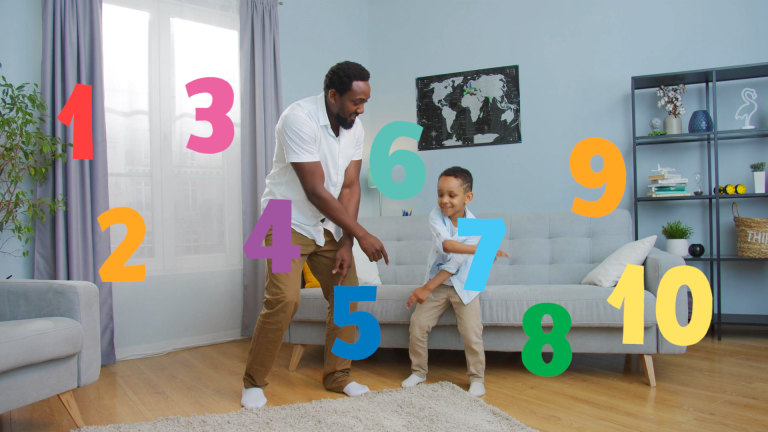Three Easy Kids Activities for Fun Outdoor Math: Mud Pies, Fairy Potions and Footprint Measurement

As summer approaches, you may be craving more time in nature. It’s no surprise, considering the positive impact nature has on our wellbeing. This also applies to young children. Research shows that when children regularly spend time outside, the benefits include improved motor skills, decreased anxiety, feelings of positivity and increased creativity and imagination.
Bring the learning outdoors this summer by checking out these three magical math experiences that you can create with items you have around your home.
Mix Fairy Potions
If your child likes to mix, measure and create, this activity is for you! Not only will you work on mathematical thinking, but your child will also become a scientist. All you need are plastic containers in various sizes, food coloring, water, measuring spoons and an outdoor space where your child can get messy. Lay down a newspaper or an old sheet if you are doing this activity on your porch or somewhere you need to protect. Involve your child in filling the plastic containers with water. Next, invite them to choose what food coloring they’d like to use for each container, and ask them to put 1-3 drops in it, depending on how light or dark you’d like the fairy potion. Use math talk, such as:
- “Can you put two drops in this container?”
- “Should I use more or less food coloring if I want this potion to be dark pink? Why?”
- “Which container holds more water? Which container holds less? How do you know?”
- “If you were a fairy, what kind of potion would you make?”
Leave a few of the containers empty so your child can experiment with combining colors. As they experiment, ask prompting questions, such as:
- “What color will we make if we mix _____ and _____?”
- “How many scoops will it take to fill this container? How do you know?”
Extend the learning: Tap into your child’s creativity by asking them to create fairy potions using leaves, flowers (e.g., dandelions) and other bits of nature from your yard (e.g., rocks, pinecones, and whatever else you can easily find in your area). Encourage mathematical thinking by asking questions, such as, “What type of fairy potion can you create using _____?” and “What would happen if I added three tablespoons of _____?” If you’re feeling extra creative (and have the time), invite your child to create some fairy wings to wear as they play.
Get Curious with Measurement
Children are never too young to begin collecting data in play-based ways. Using nonstandard units of measurement, like your child’s footprint, is a great place to start. Trace your child’s foot on a piece of cardboard (a piece of an old cereal or pizza box works great). Head outside and invite your child to interact, notice and wonder about the world around them in relation to their footprint. Use math talk such as:
- “Can you find any plants that are about the size of your footprint?”
- “Can you find something longer than your footprint? How do you know?”
- “Can you find something shorter than your footprint? How do you know?”
- “How many rocks long is your footprint?”
- “How many sticks long is your footprint?”
Extend the learning: Invite your child to lay down on the ground and use nonstandard measurements like pinecones, rocks to measure them. You can also trace your footsteps with chalk and count them. If your child is able, swap roles and invite your child to measure you! Compare and contrast your findings.
Make a Mess with a Mud Cafe
This activity involves an outdoor area where you have access to dirt. Before heading outside, collect old pots, pans, muffin tins, cookie cutters, molds, measuring cups and other natural objects (e.g., pinecones, rocks, leaves, sticks, etc.) that you can find outside. Invite your child to experiment with the materials and create their own “Mud Cafe.” As your child plays with the materials, encourage creativity by asking questions such as:
- “If I want one mud pie, and you want one mud pie, how many mud pies should we make?”
- “How many muffins can we make if we fill this whole muffin tin? Let’s count together!”
- “Can we make a pattern on this mud pie? Rock, flower, rock, what comes next?”
- “I’m making a birthday cake, and I need five candles. Can you find five sticks?”
Extend the learning: After getting cleaned up (and maybe changing clothes), learn about the different types of soil and how to follow a recipe by enjoying these Edible Dirt Cups.
No matter what brings you outside this summer, there are always opportunities to get curious. What magical math memories will you make with your child?



